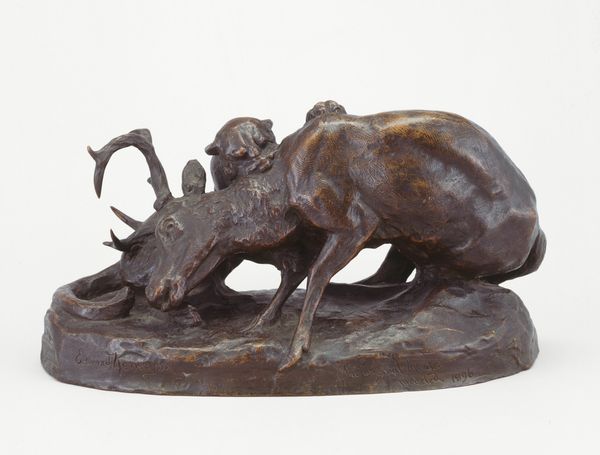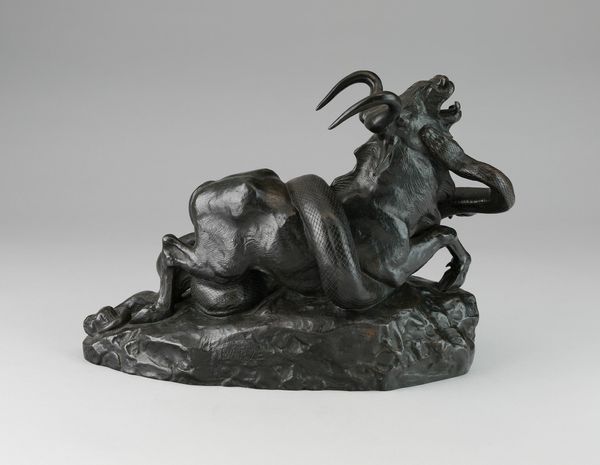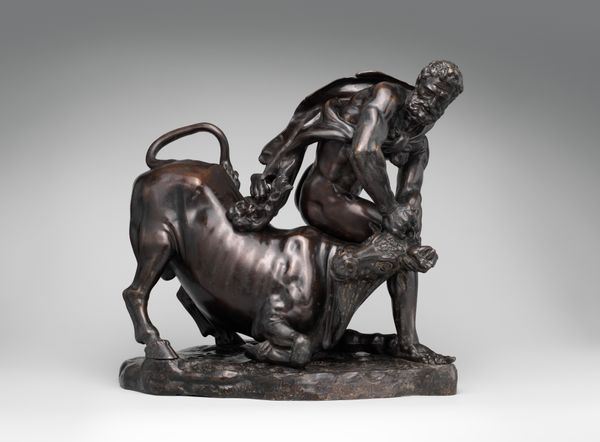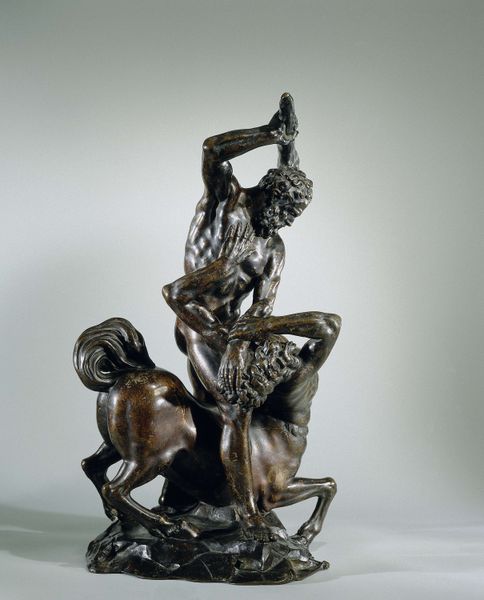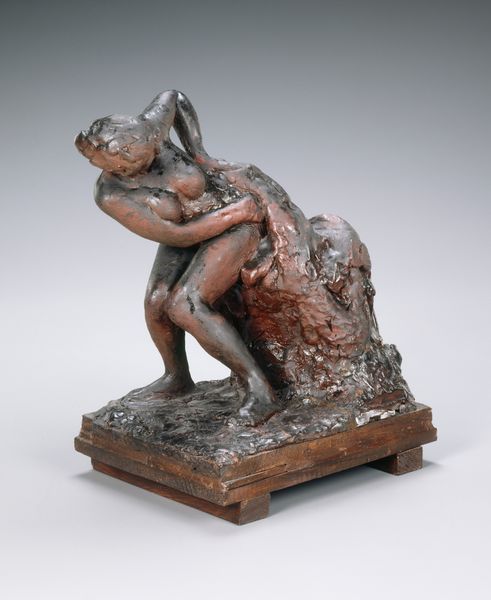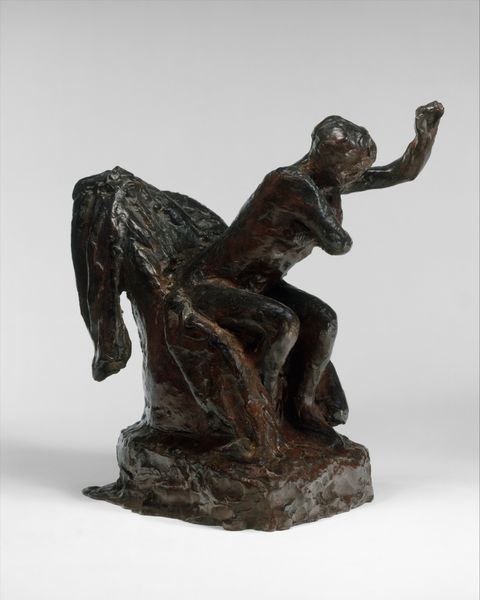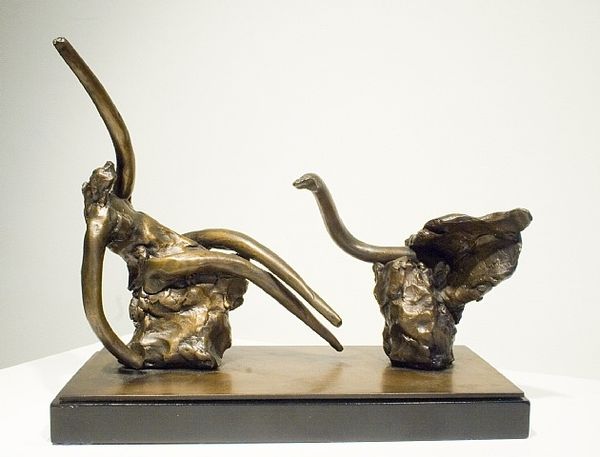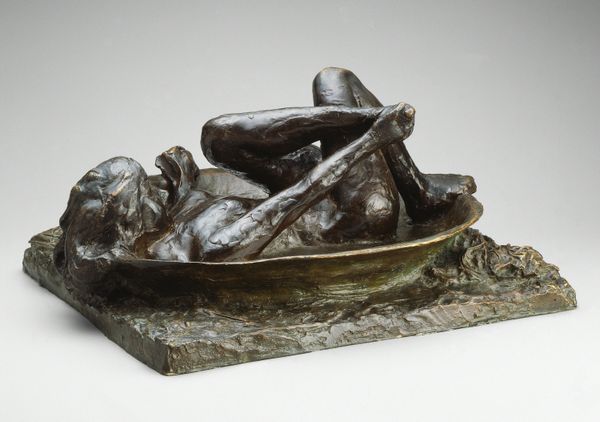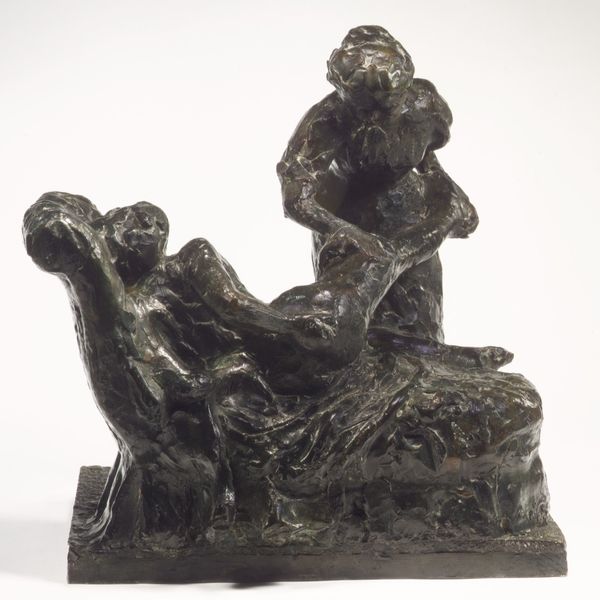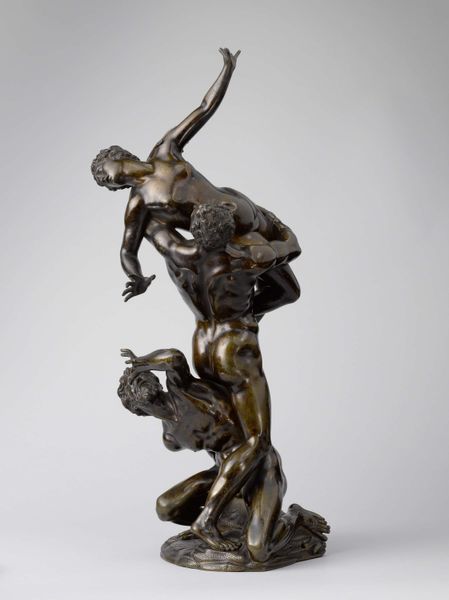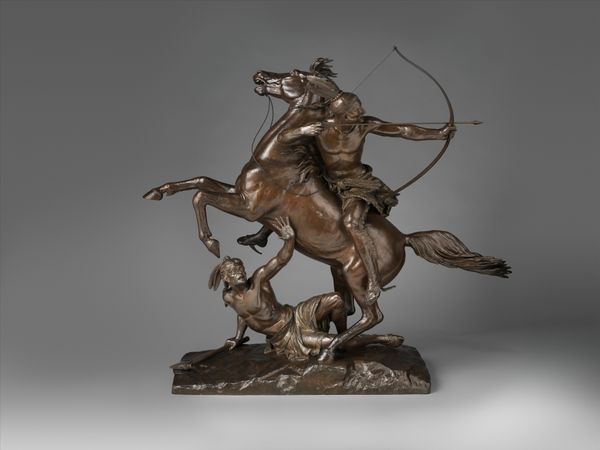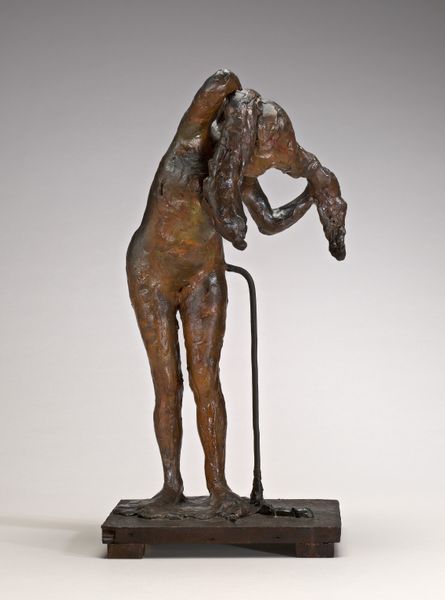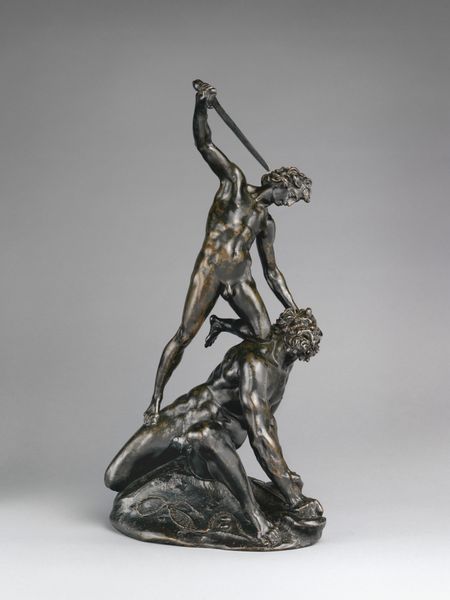
bronze, sculpture
#
narrative-art
#
sculpture
#
bronze
#
figuration
#
sculpture
#
romanticism
#
history-painting
Dimensions: 38.1 × 38.7 × 17.2 cm (15 × 15 1/4 × 6 3/4 in.)
Copyright: Public Domain
Curator: Here we have Jean-François-Théodore Gechter’s bronze sculpture, "L'Amazone blessée," created in 1839. It currently resides at The Art Institute of Chicago. What strikes you most when you first view it? Editor: It’s incredibly dynamic. The raw, twisting forms—the tension between the woman and the horse is palpable. It feels very much like an exercise in the sublime. Curator: Indeed. The piece portrays a wounded Amazonian warrior pinned beneath her falling horse. Gechter was clearly working within the Romanticism movement, tapping into an interest in depicting emotionally charged historical scenes, in this case borrowing heavily from history painting's thematic elements. Consider, though, how the myth of the Amazons—fierce, independent women—resonates even now. Does this work empower, or does it perpetuate a tired trope of female subjugation? Editor: Well, consider the composition. The eye is immediately drawn to the dramatic clash of forms: the woman's outstretched arm, mirroring the horse’s arched neck, as the plunging body of the animal is contrasted with the contorted human form. I'm inclined to focus on how Gechter masterfully employed bronze to capture a dynamic, violent encounter; a beautiful, fluid form is permanently locked in one instant of a cataclysm. Curator: The narrative of female strength curtailed by male dominance—or perhaps, society's structural dominance—cannot be ignored. Especially when we contextualize the sculpture within broader narratives concerning gender, war, and vulnerability. What does it mean to capture the so-called “heroic” female figure in her defeat? It’s particularly significant given the context of France’s colonial endeavors. Editor: Yes, but Gechter's control over the bronze’s texture shouldn’t be underestimated, either. The way light dances across the horse's muscular haunches, for instance, creates a depth and sense of movement that transcend mere political interpretation. I believe its formal qualities should hold just as much weight. Curator: Absolutely, but the politics are there too, in how this imagery and the idea of othered populations were deployed to create consent around various state activities at the time. A potent reminder to examine our own assumptions of beauty, too. Editor: Perhaps. Either way, it provides an engrossing dialogue between its visceral energy and formal rigor. A violent beauty. Curator: An incredibly fraught and complex image offering enduring points for consideration around its themes.
Comments
No comments
Be the first to comment and join the conversation on the ultimate creative platform.
